Sarah L. Johnson's Blog, page 2
August 13, 2025
These Heathens is a unique coming-of-age novel set in Civil Rights-era Atlanta
 The narrator’s voice grabs hold immediately, and what a tale she has to tell! In small-town Georgia in 1960, Doris Steele, a Black seventeen-year-old, had dropped out of school two years ago to care for her family after her Ma got sick. She’s pregnant and can’t support a baby, but the local midwives who perform abortions know her parents, so she turns to her former teacher, Mrs. Lucas, for help.
The narrator’s voice grabs hold immediately, and what a tale she has to tell! In small-town Georgia in 1960, Doris Steele, a Black seventeen-year-old, had dropped out of school two years ago to care for her family after her Ma got sick. She’s pregnant and can’t support a baby, but the local midwives who perform abortions know her parents, so she turns to her former teacher, Mrs. Lucas, for help. Mrs. Lucas has a rich childhood friend in Atlanta who offers to arrange for the procedure, and what Doris sees there takes this Bible-raised teenager way out of her comfort zone.
At Mrs. Sylvia Broussard’s home, Doris hardly knows what to think. Mrs. Broussard wears pants and red lipstick and talks frankly about sex. She’s also an atheist. Mrs. Lucas appears to be a non-believer, too, which Doris can’t fathom; Doris knows she goes to church!
Speaking with honesty and cheeky humor – she crafts witty phrases she jots in a notebook – Doris is irresistibly appealing. She’s not wholly innocent, but not worldly either, and over the course of one whirlwind weekend, she socializes with Mrs. Broussard’s friends (including Coretta Scott King and her cousin Julia, a famous singer) and attends a student workshop on nonviolent activism.
With her medical appointment weighing on her mind, Doris gets introduced to a secret community of queer women, and although she’s not gay, she has many curious questions about how that all works. She also starts pondering her relationship with God, who created a more interesting world than she ever realized, and how much she owes to her upbringing versus her own desires.
With its well-crafted historical atmosphere that emphasizes Black women’s choices in the Civil Rights-era South and the importance of joyful spaces in a repressive world, this is a winning coming-of-age story full of personality and zing.
These Heathens was published by Random House in June, and I reviewed it for the Historical Novel Society. I haven't heard much about this novel in the online historical fiction community and wanted to highlight it. It's very funny in places (something the genre doesn't see enough of), and the strong narrative voice carries you along.
Published on August 13, 2025 09:30
August 11, 2025
From the Seventeenth to the Twentieth Century: a guest post by Nancy Hayes Kilgore
Nancy Hayes Kilgore is here today with a short essay about shifting to a new historical era, and what happens when a potential story idea just won't let you go.
~
From the Seventeenth to the Twentieth CenturyNancy Hayes Kilgore
Four years ago I was immersed in the 17th-century world of Isobel Gowdie. The most famous of the Scottish women tried for witchcraft, Isobel lived in a world of drudgery and fantasy. Or was it fantasy? A peasant on the land of a Scottish laird, she used herbs and magic to cure diseases and to spite her enemies, and she could fly in the “Otherworld” of fairies and elves, where she had great powers and consorted with the Devil.
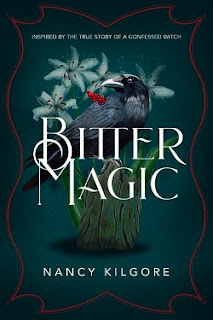 Milford House Press (2021)
Milford House Press (2021)
The Scottish Reformation was a time of social change, religious wars, and changing belief systems. The reforming Presbyterians wanted to eradicate what was then a widespread belief in that “Otherworld” and in magic, which in their minds included Catholicism as well as folk religion. Heading towards a rational theology and the Age of Reason, which was of course controlled by “the rational sex,” men, they targeted the powerful women who used magic and herbal cures (and curses). They named them witches, tortured and killed them.
Isobel Gowdie’s life and trial took place in this fierce, violent, and passionate milieu. And I, who had been a lackluster history student in school, became fascinated with the era, as well as with Isobel’s story. Differing beliefs, clashing and intersecting, and an amazing cast of characters, held me, a feminist, yogi, Presbyterian minister, and therapist, in thrall and provided continual fodder for the multi-layered novel that became Bitter Magic.
I finished Bitter Magic and launched it into the world. Phew! I thought. Enough novel writing.
But then I started sorting through a trove of letters from my grandmother in the 1910s. I became intrigued with the life of Florence, this grandmother I never knew. A young woman with tuberculosis, she was feisty and ambitious, a staunch feminist, a budding concert pianist, and her letters to my grandfather, her “comrade” but not yet a suitor, burgeoned with tantalizing elements for a novel – her adventures at a ranch in New Mexico, her train journeys, her music, and her paramours.
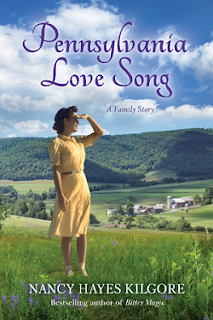 Sunbury Press (Sept. 2025)
Sunbury Press (Sept. 2025)
When I began writing the story of Florence, another question, another dimension emerged: my mother’s life as a young woman in the 1940s. My mother, Flossie, never knew her own mother, Florence, who died of tuberculosis when she was born. How did the two lives interrelate?
I’d long been attracted to the idea of a dual-timeline novel, and here it was. After lots of research about those two time periods and lots of drafts, Pennsylvania Love Song emerged.
~
 Nancy Hayes Kilgore is the author of four novels: Pennsylvania Love Song, Bitter Magic, Wild Mountain, and Sea Level. Awards include the Vermont Writers Prize and a Foreword Reviews Book of the Year.
Nancy Hayes Kilgore is the author of four novels: Pennsylvania Love Song, Bitter Magic, Wild Mountain, and Sea Level. Awards include the Vermont Writers Prize and a Foreword Reviews Book of the Year.
An ordained minister and pastoral psychotherapist, Nancy leads workshops on writing and spirituality. She lives in Vermont with her husband, dog and cat.
~
From the Seventeenth to the Twentieth CenturyNancy Hayes Kilgore
Four years ago I was immersed in the 17th-century world of Isobel Gowdie. The most famous of the Scottish women tried for witchcraft, Isobel lived in a world of drudgery and fantasy. Or was it fantasy? A peasant on the land of a Scottish laird, she used herbs and magic to cure diseases and to spite her enemies, and she could fly in the “Otherworld” of fairies and elves, where she had great powers and consorted with the Devil.
 Milford House Press (2021)
Milford House Press (2021)The Scottish Reformation was a time of social change, religious wars, and changing belief systems. The reforming Presbyterians wanted to eradicate what was then a widespread belief in that “Otherworld” and in magic, which in their minds included Catholicism as well as folk religion. Heading towards a rational theology and the Age of Reason, which was of course controlled by “the rational sex,” men, they targeted the powerful women who used magic and herbal cures (and curses). They named them witches, tortured and killed them.
Isobel Gowdie’s life and trial took place in this fierce, violent, and passionate milieu. And I, who had been a lackluster history student in school, became fascinated with the era, as well as with Isobel’s story. Differing beliefs, clashing and intersecting, and an amazing cast of characters, held me, a feminist, yogi, Presbyterian minister, and therapist, in thrall and provided continual fodder for the multi-layered novel that became Bitter Magic.
I finished Bitter Magic and launched it into the world. Phew! I thought. Enough novel writing.
But then I started sorting through a trove of letters from my grandmother in the 1910s. I became intrigued with the life of Florence, this grandmother I never knew. A young woman with tuberculosis, she was feisty and ambitious, a staunch feminist, a budding concert pianist, and her letters to my grandfather, her “comrade” but not yet a suitor, burgeoned with tantalizing elements for a novel – her adventures at a ranch in New Mexico, her train journeys, her music, and her paramours.
 Sunbury Press (Sept. 2025)
Sunbury Press (Sept. 2025)When I began writing the story of Florence, another question, another dimension emerged: my mother’s life as a young woman in the 1940s. My mother, Flossie, never knew her own mother, Florence, who died of tuberculosis when she was born. How did the two lives interrelate?
I’d long been attracted to the idea of a dual-timeline novel, and here it was. After lots of research about those two time periods and lots of drafts, Pennsylvania Love Song emerged.
~
 Nancy Hayes Kilgore is the author of four novels: Pennsylvania Love Song, Bitter Magic, Wild Mountain, and Sea Level. Awards include the Vermont Writers Prize and a Foreword Reviews Book of the Year.
Nancy Hayes Kilgore is the author of four novels: Pennsylvania Love Song, Bitter Magic, Wild Mountain, and Sea Level. Awards include the Vermont Writers Prize and a Foreword Reviews Book of the Year. An ordained minister and pastoral psychotherapist, Nancy leads workshops on writing and spirituality. She lives in Vermont with her husband, dog and cat.
Published on August 11, 2025 05:00
August 7, 2025
From Ford's Theater to Victorian England, M. J. Trow's The Blue and the Grey is a creative Civil War-era thriller
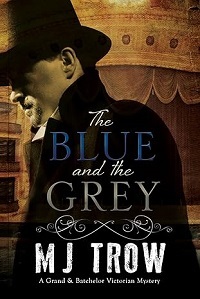 The spelling in the title of M. J. Trow’s historical thriller The Blue and the Grey hints that this novel set just after the US Civil War has a British angle. So does its subtitle, “A Grand & Batchelor Victorian Mystery.”
The spelling in the title of M. J. Trow’s historical thriller The Blue and the Grey hints that this novel set just after the US Civil War has a British angle. So does its subtitle, “A Grand & Batchelor Victorian Mystery.” It opens with a deadly night of drama at Ford’s Theater (or Theatre, as it’s written here) in Washington, DC. Captain Matthew Grand, uniformed as a member of the Third Cavalry of the Army of the Potomac, sits in the audience with his fiancée when President Lincoln is shot. Dashing into the alleyway after John Wilkes Booth, Grand has a violent encounter with one of Booth's burly accomplices, who sports an English accent.
Over in London, fresh after discovering the body of a strangled prostitute and nearly being accused of her murder, novice journalist James Batchelor gets canned from his dreary job at the Telegraph after refusing to invent copy for a prospective interview.
After being secretly recruited to track down Booth’s fellow conspirator, Grand travels to England, where – following many almost-too-coincidental-to-be-real events that put them in each other’s company – he and Batchelor compare notes and suspect the two crimes are connected.
The writing is economical and smart, demonstrating an impressively wide vocabulary, and Trow demonstrates his ease with the mid-19th century on both sides of the pond. Much is made of Grand’s unexpected culture shock overseas, which creates some funny moments, and so does a British bandleader’s poor choices at a gala to honor the visiting American. The frequent viewpoint switches among the large cast makes the experience feel kaleidoscopic, which works splendidly amidst the shocking chaos at Ford’s Theater, but less effectively in the middle sections of the book.
The plot takes many detours, which Trow seems to jokingly acknowledge to the reader via one man’s remarks. A few of the side characters (the cleverly proactive Inspector Tanner and the real-life magician known as The Great Maskelyne, to name two) feel like they’d gladly take more on-page time if Trow would let them get away with it. This is the first in a series, so maybe they’ll have their chance.
The Blue and the Grey was published by Severn House way back in 2015, meaning it took me ten years (I'm ashamed to say) to review this novel via NetGalley. I'm still working through my NetGalley list until I hit the elusive review ratio of 90%. Slowly getting to that goal, but adding more books to my queue hasn't been helping.
Published on August 07, 2025 12:15
August 2, 2025
A Daughter's Place by Martha Bátiz reveals the stories of the Cervantes women
Moving from an upscale Madrid household to Valladolid’s chaotic streets and back to the capital, this debut illustrates Golden Age Spain from the viewpoints of the women in Miguel de Cervantes’s family – whose lives were as eventful as any work of fiction. With a scholarly background in her subject, Mexican-Canadian writer Bátiz has the knowledge and storytelling prowess to make her novel vibrant.
The title character is Isabel, who speaks of her shock upon learning, at 15, that her birth father is the celebrated writer and war hero. After her aunt Magdalena collects her from her late mother’s tavern to reside with the Cervantes family, Isabel finds it hard to adjust. She must share a bed with her resentful cousin Constanza and pretend to outsiders that she’s their maid while despairing of her new status as a “bastarda… a daughter of sin.”
Living separately in Esquivias, Miguel’s devoted wife Catalina, who begins her sections with fervent prayers, wants nothing more than to bear his child, not realizing he already has one.
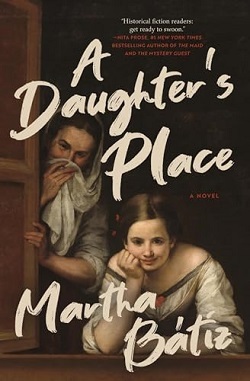 House of Anansi (2025)
House of Anansi (2025)
The era’s Catholic morality permeates the setting, which doesn’t prevent the strong-minded Cervantes women from exercising their will. Financial security is a critical motivator, too. They work as seamstresses to support themselves after having gathered a fortune to ransom Miguel from captivity in Algiers and unstintingly obey his wishes despite his frequent absences. The reason why eventually comes to dramatic light.
As Miguel conceptualizes and publishes Don Quixote, the story winds through their house relocations, the women’s love affairs past and present, and Isabel’s ongoing quest to shed the stain of illegitimacy. The shifts in perspective are mostly smooth, with a couple of instances where scene climaxes vexingly happen off-page. Bátiz movingly develops the family’s relationships across two decades, making this more than the exceptional “women behind a famous man” novel that it is.
A Daughter's Place was published by House of Anansi in Canada and the US in May, and I reviewed it from an Edelweiss copy for the Historical Novel Society. This is the author's debut novel; she has also published short story collections and an award-winning novella, Boca de lobo / Damiana's Reprieve. The painting on the cover is Two Women at a Window by 17th-century Spanish artist Bartolomé Esteban Murillo.
The title character is Isabel, who speaks of her shock upon learning, at 15, that her birth father is the celebrated writer and war hero. After her aunt Magdalena collects her from her late mother’s tavern to reside with the Cervantes family, Isabel finds it hard to adjust. She must share a bed with her resentful cousin Constanza and pretend to outsiders that she’s their maid while despairing of her new status as a “bastarda… a daughter of sin.”
Living separately in Esquivias, Miguel’s devoted wife Catalina, who begins her sections with fervent prayers, wants nothing more than to bear his child, not realizing he already has one.
 House of Anansi (2025)
House of Anansi (2025)The era’s Catholic morality permeates the setting, which doesn’t prevent the strong-minded Cervantes women from exercising their will. Financial security is a critical motivator, too. They work as seamstresses to support themselves after having gathered a fortune to ransom Miguel from captivity in Algiers and unstintingly obey his wishes despite his frequent absences. The reason why eventually comes to dramatic light.
As Miguel conceptualizes and publishes Don Quixote, the story winds through their house relocations, the women’s love affairs past and present, and Isabel’s ongoing quest to shed the stain of illegitimacy. The shifts in perspective are mostly smooth, with a couple of instances where scene climaxes vexingly happen off-page. Bátiz movingly develops the family’s relationships across two decades, making this more than the exceptional “women behind a famous man” novel that it is.
A Daughter's Place was published by House of Anansi in Canada and the US in May, and I reviewed it from an Edelweiss copy for the Historical Novel Society. This is the author's debut novel; she has also published short story collections and an award-winning novella, Boca de lobo / Damiana's Reprieve. The painting on the cover is Two Women at a Window by 17th-century Spanish artist Bartolomé Esteban Murillo.
Published on August 02, 2025 17:08
July 25, 2025
A historical fiction preview for autumn 2025
Fall is always a big season for fiction, and here are 14 upcoming novels that caught my interest. Distinctive settings across the board, with a mix of big-name publishers and smaller presses from both the US and UK.
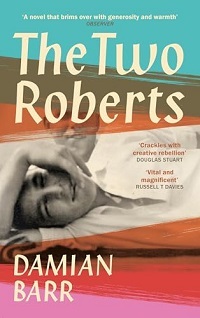
I've been curious about this one ever since I read the original publishing deal. The story of the artistic collaboration and clandestine romantic relationship between two painters in 1930s Scotland: Robert MacBryde and Robert Colquhoun, who first meet at the Glasgow School of Art. Canongate, September 2025.
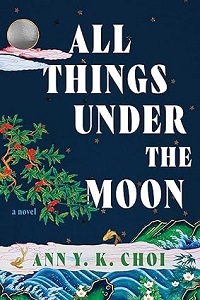
A story of feminine courage and the pursuit of literacy in Japanese-occupied Korea in the 1920s, when rebellious sentiment against the Japanese burns underground in Seoul. Simon & Schuster, September 2025.
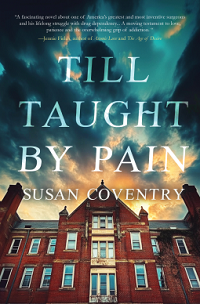
Coventry (a retired physician who has also written a YA historical novel and Regency romance) brings little-known history back into the spotlight in her literary biographical novel of 19th-century American surgeon William Stewart Halsted, the pursuit of new formulas for anesthesia, the pain of addiction, and how this impacts Halsted's wife, Caroline. Regal House, November 2025.
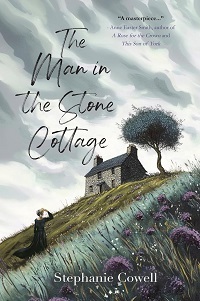
I'm always up for a new novel about the Brontë family, and Cowell's new novel intermingles the historical and mystical in a story about Emily's encounters with a Scottish shepherd living in a stone cottage on the Yorkshire moorland: a man nobody else has seen. Regal House, September 2025.
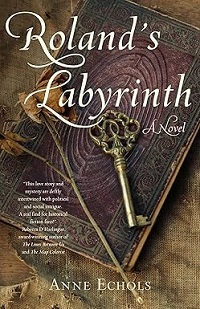
Set in Provence during the early Renaissance, Echols' second historical novel (after A Tale of Two Maidens, set in France at the time of Joan of Arc) centers on an apprentice surgeon from Barcelona, his romance with a mentally troubled young woman, and its effect on his approach to medicine. She Writes, September 2025.
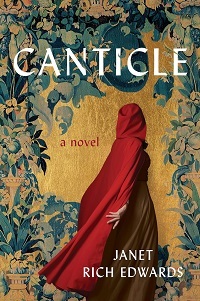
A debut novel about faith, belonging, envy, betrayal, and women's communities set in late 13th-century Flanders as an unorthodox young woman hungers to become closer to God. Spiegel & Grau, September 2025.
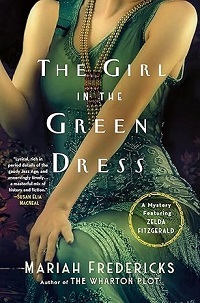
As in her previous The Wharton Plot (which I had the pleasure of interviewing the author about), Fredericks weaves a novel around a little-remembered historical crime: the shooting death in 1920 of society figure Joseph Elwell. Zelda Fitzgerald, looking for distraction during her husband's current writing project, gets curious about what really happened. Plus, an amazing cover. Minotaur, September 2025.
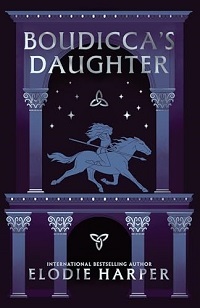
I loved Elodie Harper's The Wolf Den, set during Pompeii's last days, and really ought to get back to that series! Her Boudicca's Daughter is a standalone, giving a name (Solina) to the warrior queen's eldest daughter, starting during the time before Boudicca led the Iceni people to rebel against the might of Rome. Union Square, September 2025; the UK edition comes out in late August from Head of Zeus.

Gill Hornby's historical novels about Jane Austen's family have received increased attention after the recent TV adaptation of her Miss Austen (I recommend both the novel and the series). The Elopement looks ahead one generation to two young people brought together after their parents get married, and the scandal that ensues when they themselves fall in love. Pegasus, October 2025.
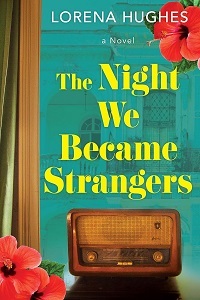
Lorena Hughes' novels are addictive reads with such interesting concepts. In 1950s Ecuador, two journalists sift through the tragic fallout from the radio adaptation of H. G. Wells' The War of the Worlds, which was broadcast in their country in 1949, determined to learn the truth about their families. Kensington, September 2025.
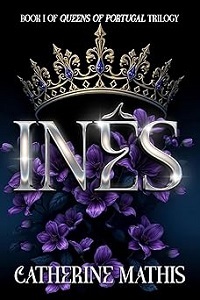
First in a series about medieval queens of Portugal, Inês reveals the tumultuous forbidden love between Pedro, Prince of Portugal, and the woman his father refuses to let him marry: noblewoman Inês de Castro. Their story, as described by the author, is "a tale of jealousy and revenge most bloody and tragic." Histria, October 2025.
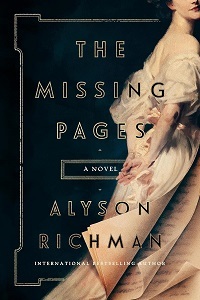
Having worked in academic libraries, I'd been familiar with Harvard's famed Widener Library, but until recently, I hadn't known its backstory: that it was built to honor Harry Elkins Widener, a Harvard alum, book collector, and Titanic victim. Richman's latest is a ghost story about Harry and a modern-day student working in the building bearing his name. Union Square, October 2025.
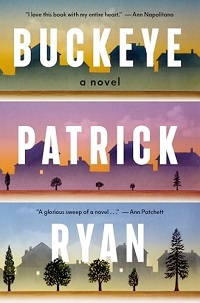
Secrets pervade a small Ohio town in this novel spanning the postwar era to contemporary times. This generational saga set in the US Midwest has been receiving considerable advance praise. (Ohio's known as the Buckeye State. So are graduates of Ohio State, of whom I'm one.) Random House, September 2025.
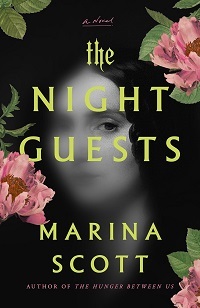
Gothic historical fiction set in early 20th-century Omaha, Nebraska. A medium's presence in the home of a high-society woman stirs up restless spirits. Lake Union, November 2025.

I've been curious about this one ever since I read the original publishing deal. The story of the artistic collaboration and clandestine romantic relationship between two painters in 1930s Scotland: Robert MacBryde and Robert Colquhoun, who first meet at the Glasgow School of Art. Canongate, September 2025.

A story of feminine courage and the pursuit of literacy in Japanese-occupied Korea in the 1920s, when rebellious sentiment against the Japanese burns underground in Seoul. Simon & Schuster, September 2025.

Coventry (a retired physician who has also written a YA historical novel and Regency romance) brings little-known history back into the spotlight in her literary biographical novel of 19th-century American surgeon William Stewart Halsted, the pursuit of new formulas for anesthesia, the pain of addiction, and how this impacts Halsted's wife, Caroline. Regal House, November 2025.

I'm always up for a new novel about the Brontë family, and Cowell's new novel intermingles the historical and mystical in a story about Emily's encounters with a Scottish shepherd living in a stone cottage on the Yorkshire moorland: a man nobody else has seen. Regal House, September 2025.

Set in Provence during the early Renaissance, Echols' second historical novel (after A Tale of Two Maidens, set in France at the time of Joan of Arc) centers on an apprentice surgeon from Barcelona, his romance with a mentally troubled young woman, and its effect on his approach to medicine. She Writes, September 2025.

A debut novel about faith, belonging, envy, betrayal, and women's communities set in late 13th-century Flanders as an unorthodox young woman hungers to become closer to God. Spiegel & Grau, September 2025.

As in her previous The Wharton Plot (which I had the pleasure of interviewing the author about), Fredericks weaves a novel around a little-remembered historical crime: the shooting death in 1920 of society figure Joseph Elwell. Zelda Fitzgerald, looking for distraction during her husband's current writing project, gets curious about what really happened. Plus, an amazing cover. Minotaur, September 2025.

I loved Elodie Harper's The Wolf Den, set during Pompeii's last days, and really ought to get back to that series! Her Boudicca's Daughter is a standalone, giving a name (Solina) to the warrior queen's eldest daughter, starting during the time before Boudicca led the Iceni people to rebel against the might of Rome. Union Square, September 2025; the UK edition comes out in late August from Head of Zeus.

Gill Hornby's historical novels about Jane Austen's family have received increased attention after the recent TV adaptation of her Miss Austen (I recommend both the novel and the series). The Elopement looks ahead one generation to two young people brought together after their parents get married, and the scandal that ensues when they themselves fall in love. Pegasus, October 2025.

Lorena Hughes' novels are addictive reads with such interesting concepts. In 1950s Ecuador, two journalists sift through the tragic fallout from the radio adaptation of H. G. Wells' The War of the Worlds, which was broadcast in their country in 1949, determined to learn the truth about their families. Kensington, September 2025.

First in a series about medieval queens of Portugal, Inês reveals the tumultuous forbidden love between Pedro, Prince of Portugal, and the woman his father refuses to let him marry: noblewoman Inês de Castro. Their story, as described by the author, is "a tale of jealousy and revenge most bloody and tragic." Histria, October 2025.

Having worked in academic libraries, I'd been familiar with Harvard's famed Widener Library, but until recently, I hadn't known its backstory: that it was built to honor Harry Elkins Widener, a Harvard alum, book collector, and Titanic victim. Richman's latest is a ghost story about Harry and a modern-day student working in the building bearing his name. Union Square, October 2025.

Secrets pervade a small Ohio town in this novel spanning the postwar era to contemporary times. This generational saga set in the US Midwest has been receiving considerable advance praise. (Ohio's known as the Buckeye State. So are graduates of Ohio State, of whom I'm one.) Random House, September 2025.

Gothic historical fiction set in early 20th-century Omaha, Nebraska. A medium's presence in the home of a high-society woman stirs up restless spirits. Lake Union, November 2025.
Published on July 25, 2025 10:30
July 19, 2025
Agony in Amethyst by A. M. Stuart unfolds an exciting mystery in 1911 Singapore
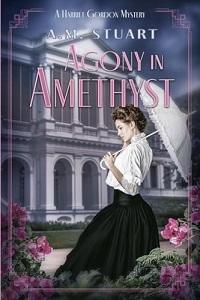 This fifth and last volume in the Harriet Gordon series, set in colonial Singapore in 1911, is the most excitingly constructed mystery I’ve read for some time. The title refers to the shocking death of a fifteen-year-old girl who sang at a ball at Government House held to celebrate the arrival of the new Secretary of State for the Colonies, Henry Cunningham. Her body, oddly clad in an ill-fitting amethyst dress rather than her school uniform, had clearly fallen from the gallery windows above, and signs point to murder.
This fifth and last volume in the Harriet Gordon series, set in colonial Singapore in 1911, is the most excitingly constructed mystery I’ve read for some time. The title refers to the shocking death of a fifteen-year-old girl who sang at a ball at Government House held to celebrate the arrival of the new Secretary of State for the Colonies, Henry Cunningham. Her body, oddly clad in an ill-fitting amethyst dress rather than her school uniform, had clearly fallen from the gallery windows above, and signs point to murder.Harriet Gordon, quickly on the scene in her gray evening gown, is a doctor’s widow and teacher with a controversial past as a London suffragette. Her beau, Robert Curran of the Straits Settlements Police Force, has recently returned from extended business in Kuala Lumpur only to lose a promotion to his former Scotland Yard rival.
Even worse, Cunningham’s presence in the country irritates Curran, since they were both associated with a case back in Britain which Curran was forced to abandon. Solving the present crime takes a two-pronged approach, both amateur (Harriet) and professional (Curran), which heightens tension when they’re not working in sync. As they investigate, their planned future gets complicated by secrets and betrayal.
Stuart continues adding new angles to the mystery while keeping tight control of the impeccably paced plot and its many players—I never felt lost. Harriet and Curran are well-rounded individuals with realistic flaws and a strong sense of integrity. The blend of cultures in Singapore is primarily background detail, with the focus being life and political administration in the British colony. There are a few apparent spoilers for previous events, as some characters are working through fallout from earlier books, but the author succeeds in weaving in sufficient backstory to make this novel stand alone.
Agony in Amethyst was published by Oportet Publishing in 2024; I reviewed it for the Historical Novels Review initially. The first three books in the series, beginning with Singapore Sapphire, were published by Berkley/Penguin Random House, and the author moved to her own imprint for the last two books.
I haven't read others in the series yet, but plan to do so, once enough time has passed so the plot of this latest one isn't so fresh in my mind! The author, who is Australian, also writes as Alison Stuart. According to her newsletter, she'll be continuing the story of Harriet and Curran, starting with a novella sometime later this year.
Published on July 19, 2025 09:26
July 16, 2025
Interview with India Edghill about her new epic of 1870s India, A Tiger in the Garden
India Edghill’s latest novel A Tiger in the Garden is a sweeping epic set in the isolated Indian hills in the Victorian era. At its heart is the intricate battle of wills – and transforming relationship – between Lily Shawcross, a dark-haired English girl of just sixteen, and Sherdil, Rajah of the independent Indian state of Sherabagh. Both become victims of the schemes of the same woman, Princess Lilavati of Sherabagh – who is Sherdil’s cousin and Lily’s old schoolfriend from England. Duped into taking Lilavati’s place as Sherdil’s would-be bride upon her arrival in Bombay, Lily is furious and wants to find a way back to her relatives in India. For his part, Sherdil desperately needs Lily to continue the deception, since if any of the British discover an English girl was kidnapped into his hands, consequences would be severe both for him and for Sherabagh’s independence.
There are good reasons why others accept that Lily is really Lilavati; you'll have to read the book!
From a ride within a jeweled howdah atop an elephant to the luxurious zenana (secluded women’s quarters) of the Tiger Palace in Sherabagh, the novel is exquisitely detailed. Lily’s emotional maturity over the course of the story makes for a compelling journey, as does the slow-burning chemistry between her and Sherdil. As in her previous works of Biblical historical fiction, India Edghill brings to life the rivalries and friendships between women. Similar to M. M. Kaye's historical novels about India, this is a lengthy, involving read that lets you get to know the characters very well and vicariously spend time amid the novel's locale and culture.
When I’d interviewed India about Queenmaker: A Novel of King David’s Queen way back in 2001, she’d spoken about her novel-in-progress, A Tiger in the Garden, which I’m delighted to have had the chance to read in published form at last. Thanks to the author for answering my interview questions.
It was over 20 years ago you’d told me you were working on A Tiger in the Garden, which you’d called “an epic novel of romance and adventure set in India in 1879.” I remember looking forward to reading it, back then, and was so happy to hear the news that the novel was done and about to be published! I’m always interested in learning how historical novels were conceptualized. What can you share about the origin story for this one?
The genesis for Tiger was actually very simple: I wanted to tell a “switched identities” story in which the main characters knew about the switch – yet it made no difference to how the action unfolded. It wound up taking me years of work and thousands of words to achieve what turned out to be quite a different story. (Similarly, Margaret Mitchell said of Gone With the Wind that she wanted to tell the story of a violent marriage – that of Scarlett and Rhett; it took her hundreds of pages to actually get to that story.)
It’s hard to believe that Tiger’s been in process for twenty years! Of course, much of that time was spent in research, and some of it on writing projects for St. Martin’s. And when I say “research,” I mean I fell deeply into the sheer joy of learning about people, places, and events I hadn’t known existed. When I started Tiger, the only way to acquire the books and articles I needed was by a combination of interlibrary loan and sheer luck. For instance, I happened upon a copy of General Roberts’ memoirs in a secondhand bookshop in Dublin, Ireland, which was pure luck. As time went on, new venues for acquiring research materials opened up, and I took full advantage of them. It was delightful to be able to find what I needed by typing in a title or author and clicking a search button! I admit I may have overdone it just a bit – my India library wound up being nearly 500 volumes.
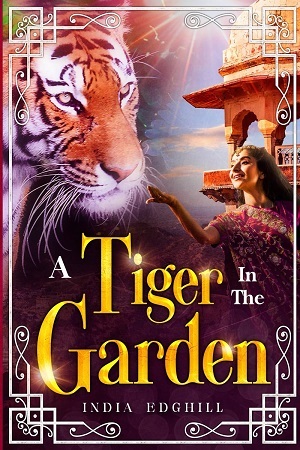 Talitho Press (2025)
Talitho Press (2025)
So I have to confess I went overboard on research. But research is such fun! And India is a treasure-trove of amazing facts. I kept finding more and more interesting and sometimes just plain bizarre information. When I discovered there was a Hindu tribe in the Himalayas that actually ate beef, I admit I was flabbergasted. Discovering that white leopards existed was just plain delightful, and I promptly bestowed some upon my heroine.
Some research was more difficult than anticipated. On of the back-story characters is a freelance European adventurer in the early 1700s. For him, I needed information about 1690s Poland – which turned out to be amazingly hard to sift through. Thanks to the Internet and the kindness of strangers, I was able to find the information, but I was surprised at how difficult it was to discover.
As time went on, the story grew in all directions. Although it doesn’t necessarily make it into the novel, I wound up knowing all about even minor characters and incidents, including who the wound up eventually marrying. In one instance, that of the child Moti’s mother, who is just a walk-on, I realized she had brought her daughter north to escape the horrendous famine of 1876-78. This has nothing to do with the main story!
And as time went on, it grew harder and harder to let the story go; I loved all the characters so much! Eventually I had to force myself to declare it done and hand it over to my agent. But letting it go was a wrench.
The décor within the zenana at Sherabagh is beyond sumptuous and decadent. I can imagine how much fun it was to imagine such a place into existence (at least in a fictional sense). What was this experience like? How did you recreate and design a plan for the Tiger Palace?
Oh, yes, that was great fun. I spent a lot of time immersed in books about India’sroyal architecture, especially books with full-color illustrations. I modeled the Sherabagh palace and zenana on the older Indian palaces; places that grew and adapted over the course of centuries. The Sherabagh palace dates back a very long way; into the mists of semi-history, and was added to until it sprawled over a hillside and became a veritable labyrinth. Some portions of it are now deserted, and have become a habitation of various kinds of wildlife – as is seen in Lily’s war with the monkeys when she tries to tidy up the Old Palace.
Unlike (for example) Simla, which features in many historical novels, Sherabagh’s an independent state, and Sherdil naturally wants to avoid its being overtaken by the British. You get a good sense of the political climate in the novel, and the reader’s always aware of it in the background. How did you decide how much of the politics to weave into the story?
That was a tough one; the politics is vital to the story, but the story has to come first. And different characters view the politics of the time very differently. I tried to provide enough political information for the reader without overwhelming them with detail. And I tried to show how a historical incident can be seen through different eyes; Sherdil and his brother-in-law Kishore are both Indian rulers, but they view British politics and policies quite differently.
Lily is expecting to have a grand, exotic adventure when she comes to India, but she’s so young and sheltered that she has little experience with life and even less with men. How did her character develop during the writing process?
Originally Lily was your basic “I know everything about India” English character who was going to Learn A Lesson About Reality. But as time and writing went on, she developed into a more fully-rounded person, one who learns and grows, yes but who does that from a position of intelligence and good will. She changes from a well-meaning child to an adult woman, one who, as one reader put it, “releases the queen within.” I found it very hard to stop writing about her and release her into her happy future.
What made you decide to include shorter stories from earlier points in time (usually cross-cultural love stories) within the larger novel? Did you write them first, fit them in later, or some of both?
The “What’s Past is Prologue” stories were part of the novel from its inception. Each examines a relationship of both love and politics; some happily, others not. I wanted to explore how people could adjust and compromise to create a viable future for themselves; the stories echo that of Lily and Sherdil, the happiest story of adjustment and accommodation. I love all of the characters dearly – although I admit to being frustrated by Alice and Nataraj, who throw over everything for passionate love, but who are incapable of developing that into a true and enduring love.
You’ve mentioned that you’re a big M. M. Kaye fan. How does her work inspire you?
Oh, she’s marvelous! She was born in and lived for many years in India, a place she dearly loved, and that love radiates through her epic novels The Far Pavilions and Shadow of the Moon. Her descriptions are deeply evocative and her characters are deeply felt. I re-read her books often, and The Far Pavilions was my guiding star during the years I was writing A Tiger in the Garden.
And even better, while researching Kaye I met someone who s now a good friend of mine: Michael Kourtoulou, whose website www.mmkaye.com is a comprehensive survey of Kaye’s work. Thanks to Michael I was able to see The Far Pavilions musical in London in 2005, and he’s been a staunch supporter of Tiger.
What led you back to independent publishing with A Tiger in the Garden? Was your original indie publishing experience (with Queenmaker, before it was picked up by St. Martin’s) helpful at all with the process?
I do seem to have come full circle, don’t I? Well, first I handed Tiger over to my agent, and she loved it. But alas, editors, while personally liking the book, decided it was not a time period and setting (India 1878) that was marketable, and that it was way too long. (Oddly enough, “not a time period and setting that was marketable” is what was said about Queenmaker back in the 90s, which is why I wound up self-publishing it. Then The Red Tent hit big and suddenly Biblical women fiction was in demand and St. Martin’s bought it. Publishing is one crazy ride!)
My previous experience with indie publishing was so long ago that the entire playing field has changed. Now I was able to publish Tiger for free using Amazon’s publishing platform. While it cost me a month of struggling with formatting, it was basically pretty easy – and I was very pleased to be able to keep the cost down to $2.99 for the Kindle edition and $16.95 for the trade paperback.
And while I miss interacting with them on a daily basis, I’m glad to have Lily and Sherdil’s story out in the world at last.
~
Visit India Edghill's website to learn more about A Tiger in the Garden and her other historical novels.
There are good reasons why others accept that Lily is really Lilavati; you'll have to read the book!
From a ride within a jeweled howdah atop an elephant to the luxurious zenana (secluded women’s quarters) of the Tiger Palace in Sherabagh, the novel is exquisitely detailed. Lily’s emotional maturity over the course of the story makes for a compelling journey, as does the slow-burning chemistry between her and Sherdil. As in her previous works of Biblical historical fiction, India Edghill brings to life the rivalries and friendships between women. Similar to M. M. Kaye's historical novels about India, this is a lengthy, involving read that lets you get to know the characters very well and vicariously spend time amid the novel's locale and culture.
When I’d interviewed India about Queenmaker: A Novel of King David’s Queen way back in 2001, she’d spoken about her novel-in-progress, A Tiger in the Garden, which I’m delighted to have had the chance to read in published form at last. Thanks to the author for answering my interview questions.
It was over 20 years ago you’d told me you were working on A Tiger in the Garden, which you’d called “an epic novel of romance and adventure set in India in 1879.” I remember looking forward to reading it, back then, and was so happy to hear the news that the novel was done and about to be published! I’m always interested in learning how historical novels were conceptualized. What can you share about the origin story for this one?
The genesis for Tiger was actually very simple: I wanted to tell a “switched identities” story in which the main characters knew about the switch – yet it made no difference to how the action unfolded. It wound up taking me years of work and thousands of words to achieve what turned out to be quite a different story. (Similarly, Margaret Mitchell said of Gone With the Wind that she wanted to tell the story of a violent marriage – that of Scarlett and Rhett; it took her hundreds of pages to actually get to that story.)
It’s hard to believe that Tiger’s been in process for twenty years! Of course, much of that time was spent in research, and some of it on writing projects for St. Martin’s. And when I say “research,” I mean I fell deeply into the sheer joy of learning about people, places, and events I hadn’t known existed. When I started Tiger, the only way to acquire the books and articles I needed was by a combination of interlibrary loan and sheer luck. For instance, I happened upon a copy of General Roberts’ memoirs in a secondhand bookshop in Dublin, Ireland, which was pure luck. As time went on, new venues for acquiring research materials opened up, and I took full advantage of them. It was delightful to be able to find what I needed by typing in a title or author and clicking a search button! I admit I may have overdone it just a bit – my India library wound up being nearly 500 volumes.
 Talitho Press (2025)
Talitho Press (2025)So I have to confess I went overboard on research. But research is such fun! And India is a treasure-trove of amazing facts. I kept finding more and more interesting and sometimes just plain bizarre information. When I discovered there was a Hindu tribe in the Himalayas that actually ate beef, I admit I was flabbergasted. Discovering that white leopards existed was just plain delightful, and I promptly bestowed some upon my heroine.
Some research was more difficult than anticipated. On of the back-story characters is a freelance European adventurer in the early 1700s. For him, I needed information about 1690s Poland – which turned out to be amazingly hard to sift through. Thanks to the Internet and the kindness of strangers, I was able to find the information, but I was surprised at how difficult it was to discover.
As time went on, the story grew in all directions. Although it doesn’t necessarily make it into the novel, I wound up knowing all about even minor characters and incidents, including who the wound up eventually marrying. In one instance, that of the child Moti’s mother, who is just a walk-on, I realized she had brought her daughter north to escape the horrendous famine of 1876-78. This has nothing to do with the main story!
And as time went on, it grew harder and harder to let the story go; I loved all the characters so much! Eventually I had to force myself to declare it done and hand it over to my agent. But letting it go was a wrench.
The décor within the zenana at Sherabagh is beyond sumptuous and decadent. I can imagine how much fun it was to imagine such a place into existence (at least in a fictional sense). What was this experience like? How did you recreate and design a plan for the Tiger Palace?
Oh, yes, that was great fun. I spent a lot of time immersed in books about India’sroyal architecture, especially books with full-color illustrations. I modeled the Sherabagh palace and zenana on the older Indian palaces; places that grew and adapted over the course of centuries. The Sherabagh palace dates back a very long way; into the mists of semi-history, and was added to until it sprawled over a hillside and became a veritable labyrinth. Some portions of it are now deserted, and have become a habitation of various kinds of wildlife – as is seen in Lily’s war with the monkeys when she tries to tidy up the Old Palace.
Unlike (for example) Simla, which features in many historical novels, Sherabagh’s an independent state, and Sherdil naturally wants to avoid its being overtaken by the British. You get a good sense of the political climate in the novel, and the reader’s always aware of it in the background. How did you decide how much of the politics to weave into the story?
That was a tough one; the politics is vital to the story, but the story has to come first. And different characters view the politics of the time very differently. I tried to provide enough political information for the reader without overwhelming them with detail. And I tried to show how a historical incident can be seen through different eyes; Sherdil and his brother-in-law Kishore are both Indian rulers, but they view British politics and policies quite differently.
Lily is expecting to have a grand, exotic adventure when she comes to India, but she’s so young and sheltered that she has little experience with life and even less with men. How did her character develop during the writing process?
Originally Lily was your basic “I know everything about India” English character who was going to Learn A Lesson About Reality. But as time and writing went on, she developed into a more fully-rounded person, one who learns and grows, yes but who does that from a position of intelligence and good will. She changes from a well-meaning child to an adult woman, one who, as one reader put it, “releases the queen within.” I found it very hard to stop writing about her and release her into her happy future.
What made you decide to include shorter stories from earlier points in time (usually cross-cultural love stories) within the larger novel? Did you write them first, fit them in later, or some of both?
The “What’s Past is Prologue” stories were part of the novel from its inception. Each examines a relationship of both love and politics; some happily, others not. I wanted to explore how people could adjust and compromise to create a viable future for themselves; the stories echo that of Lily and Sherdil, the happiest story of adjustment and accommodation. I love all of the characters dearly – although I admit to being frustrated by Alice and Nataraj, who throw over everything for passionate love, but who are incapable of developing that into a true and enduring love.
You’ve mentioned that you’re a big M. M. Kaye fan. How does her work inspire you?
Oh, she’s marvelous! She was born in and lived for many years in India, a place she dearly loved, and that love radiates through her epic novels The Far Pavilions and Shadow of the Moon. Her descriptions are deeply evocative and her characters are deeply felt. I re-read her books often, and The Far Pavilions was my guiding star during the years I was writing A Tiger in the Garden.
And even better, while researching Kaye I met someone who s now a good friend of mine: Michael Kourtoulou, whose website www.mmkaye.com is a comprehensive survey of Kaye’s work. Thanks to Michael I was able to see The Far Pavilions musical in London in 2005, and he’s been a staunch supporter of Tiger.
What led you back to independent publishing with A Tiger in the Garden? Was your original indie publishing experience (with Queenmaker, before it was picked up by St. Martin’s) helpful at all with the process?
I do seem to have come full circle, don’t I? Well, first I handed Tiger over to my agent, and she loved it. But alas, editors, while personally liking the book, decided it was not a time period and setting (India 1878) that was marketable, and that it was way too long. (Oddly enough, “not a time period and setting that was marketable” is what was said about Queenmaker back in the 90s, which is why I wound up self-publishing it. Then The Red Tent hit big and suddenly Biblical women fiction was in demand and St. Martin’s bought it. Publishing is one crazy ride!)
My previous experience with indie publishing was so long ago that the entire playing field has changed. Now I was able to publish Tiger for free using Amazon’s publishing platform. While it cost me a month of struggling with formatting, it was basically pretty easy – and I was very pleased to be able to keep the cost down to $2.99 for the Kindle edition and $16.95 for the trade paperback.
And while I miss interacting with them on a daily basis, I’m glad to have Lily and Sherdil’s story out in the world at last.
~
Visit India Edghill's website to learn more about A Tiger in the Garden and her other historical novels.
Published on July 16, 2025 06:00
July 11, 2025
Janet Wertman's Nothing Proved offers a new look at the future Elizabeth I
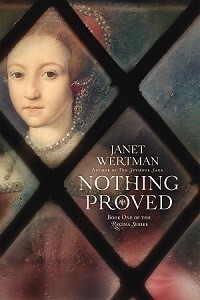 Everyone familiar with the Tudors knows that Elizabeth I became queen after the death of her older half-sister, Mary I, giving her name to the era considered England’s Golden Age.
Everyone familiar with the Tudors knows that Elizabeth I became queen after the death of her older half-sister, Mary I, giving her name to the era considered England’s Golden Age. Though it may seem to have been a natural choice, Janet Wertman’s latest novel makes plain that Elizabeth’s succession to the throne was never a sure thing until just before it happened. Nothing Proved explores an extraordinary coming-of-age story, one fraught with uncertainty and minefields galore, as navigated by a sharp yet vulnerable young woman.
Following a prologue featuring Elizabeth, her royal relatives, and other noble children in the schoolroom, chatting about issues that will shape their fates, the plot spans just over a decade: from fourteen-year-old Elizabeth’s unwitting participation in a scandal involving her stepmother’s husband through the shining moment she and her allies sometimes doubted would ever arrive.
In between, she must face up to her supposed illegitimacy while giving no cause for anyone to remember the (again, supposed) shameful behavior that her mother, Anne Boleyn, had engaged in. Elizabeth must hold fast to her determination never to marry even as major political players push her into it, either to make alliances for their benefit or to force her out of the picture.
During Mary I’s troubled reign, Elizabeth also acts as her sister’s most loyal subject and appears to practice Catholicism so convincingly that her devotion could never be doubted… all the while weighing who’s worthy of her trust. She does this so well that by the time she ascends the throne, she knows who her true friends are, which is depicted movingly as a silent moment of triumph. In addition to her loyal women, among them are William Cecil, whose own path of survival unfolds alongside Elizabeth’s, and her good childhood friend Robert Dudley.
The title of the book comes from the time Elizabeth spends as Mary’s prisoner (“Much suspected by me, nothing proved can be,” she wrote), and Wertman illustrates Elizabeth’s strength of will, refusing to admit wrongdoing despite immense pressure to implicate herself. Her story unfolds in a sequential collection of scenes, with the dates signaled up front. While this feels episodic in the beginning, the narrative does hit the key moments in Elizabeth’s younger life.
Her character emerges through her self-reflections and her interactions with others. Particularly notable in this vein are Elizabeth’s deliberately calm, wise responses to Bishop Stephen Gardiner’s attempts to break her, and the witty conversations between her and her sister’s husband, Philip of Spain, as they size up one another during their walks at court.
Her story is well worth reading, even for those who've read earlier novels about Elizabeth I.
Nothing Proved was published in May; my thanks to the author for the eARC.
Published on July 11, 2025 06:41
July 6, 2025
Conn Iggulden's epic Roman novel Tyrant shows young Emperor Nero asserting his power
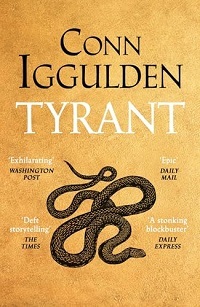 At the start of Iggulden’s smartly executed second novel in a trilogy—following Nero (2024)—our main character, Nero, is a willful, occasionally cruel adolescent who gets adopted by his stepfather, Emperor Claudius, to the delight of his beautiful, scheming mother, Agrippina.
At the start of Iggulden’s smartly executed second novel in a trilogy—following Nero (2024)—our main character, Nero, is a willful, occasionally cruel adolescent who gets adopted by his stepfather, Emperor Claudius, to the delight of his beautiful, scheming mother, Agrippina. The story rotates through multiple perspectives, including that of Agrippina, Nero’s two mentors, and Nero himself as he carouses with friends and learns about administering justice, which he does with his own personal spin.
With various conspiracies afoot, one can admire Agrippina’s quick reactions and guile while deploring her terrible actions. Her son absorbs her lessons all too well, disdaining her control after being proclaimed emperor at just 16.
Iggulden crafts characters and historical atmosphere with finesse. In scenes simultaneously exhibiting the might, extravagance, violence, and utter alienness of first-century Rome, captive Britons are forced to fight mock sea battles in an immense arena for entertainment purposes until one surviving crew member remains. “They liked to see aggression . . . aggression and blood,” thinks one participant, and the novel offers plenty of both in a vivid, exhilarating plot.
Conn Iggulden's Tyrant was published by Pegasus in the US in May; the UK publisher is Michael Joseph, and that cover is very close to the one above (with different endorsements). I reviewed it for Booklist in April. Nero plays a larger role in this novel than he did in the first, where he was a child, but his mother, Agrippina, is a character you can't look away from. I think she's Iggulden's most memorable character yet.
The mock sea battle was called a naumachia, which you can read about online in the Encyclopedia Romana, hosted at the University of Chicago. Spanish painter Ulpiano Checa imagined it onto canvas in a work from 1894. The spectacle in the novel is seen from the viewpoint of Caractacus, a chieftain of the British Catuvellauni people who was captured and brought to Rome for entertainment... and who's forced to fight for his freedom.
 Ulpiano Checa, Public domain, via Wikimedia Commons
Ulpiano Checa, Public domain, via Wikimedia Commons
Published on July 06, 2025 06:00
June 27, 2025
The case of the spoilery prologue
A few months ago, another historical fiction reader and I were exchanging thoughts via email about prologues. Such as: why do so many books have them? Are they that helpful in hooking readers into a story? A special case is when (gasp) the prologue reveals the ending.
The novel she’d just read was A Poisoner’s Tale by Cathryn Kemp, which is biographical fiction about Giulia Tofana, an herbalist and professional poisoner in 17th-century Rome billed as (per the novel) perhaps “the first female serial killer in history.”
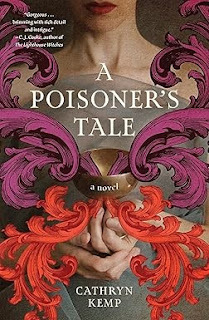 Pub. by Union Square (Feb. 2025). The UK publisher is Penguin.
Pub. by Union Square (Feb. 2025). The UK publisher is Penguin.
“This novel is an example of what I call to myself a prologue giveaway,” she told me, explaining how she isn't keen on prologues in general, especially when they reveal the ending, but enjoyed the novel as a whole very much. “In the case of A Poisoner’s Tale," she wondered, "why do you think Kemp used a prologue telling the ending of the story?”
In the very first sentence of the book, which opens in Rome in 1659, it’s clear that our heroine’s story won’t end happily.
At first, I thought this would annoy me, knowing in advance how Giulia’s story would conclude; I had heard of her before, but hadn't read much about her life. Then I got to thinking about it more.
After the prologue, we jump back to the year 1632 in Palermo, as Giulia, just thirteen, is introduced to her lethal trade by her mother, who dispenses poisons to women of the city desperate to free themselves from horrible physical abuse and potential death at the hands of men in their lives.
This discussion also called to mind an older novel I’d come across while putting together my first Historical Fiction: A Guide to the Genre twenty years ago. I’d skimmed the book for the purpose of summarizing it and remember glancing through the final pages and author’s note. At the time I was aghast to learn that the heroine died at the end. What a disappointment to spend 300 pages invested in her life only to see her killed off. There was no hint about this beforehand. The novel was loosely based in history/legend, and the main character was fictional. And I never did go back and read it in full, even though the setting had intrigued me.
I won’t mention the title or author so as not to spoil the experience for anyone who picks up the book!
But if I had known in advance that that heroine’s tale would end tragically? I may not have minded the finale so much, since it wouldn’t have come as a shock. Hmmm.
Which brings us back to A Poisoner’s Tale. The author’s decision to add a spoilery prologue, which addresses Giulia’s final fate, provokes a shift in the reader’s focus. Knowing how it ends, the overall story then becomes a deep dive into character development, motive, and unthinkable choices. What spurred Giulia to take the risks she did? What obstacles did she encounter and overcome, and what circumstances led her to that ultimate point?
Even more, the novel serves to grant a much-maligned character (a historical figure) a voice, exploring the complex moral questions she must have faced. I’m partway through reading it, and don’t think the prologue hindered the reading experience in any way.
Giulia Tofana's story is a mix of history and legend. Other novelists have interpreted it differently, so if you'd prefer an alternate version, there are other choices out there (see this article from Deborah Swift at Aspects of History about the background to her own novels about her).
In addition, look at all the historical fiction about Anne Boleyn, whose fate is hardly a secret.
While I was conceptualizing this post in recent weeks, a post from Martha Jean Johnson’s Substack dropped into my inbox, and it covered similar ground. I recommend checking it out! Her protagonist is Tudor musician Mark Smeaton, and if you know Anne Boleyn’s history, you’ll recognize his name. One good point Johnson makes among many is that “the outline isn’t the story.”
Having pondered these authorial decisions, would I go back now and read that older novel, now that I know how it ends? Maybe I would.
The novel she’d just read was A Poisoner’s Tale by Cathryn Kemp, which is biographical fiction about Giulia Tofana, an herbalist and professional poisoner in 17th-century Rome billed as (per the novel) perhaps “the first female serial killer in history.”
 Pub. by Union Square (Feb. 2025). The UK publisher is Penguin.
Pub. by Union Square (Feb. 2025). The UK publisher is Penguin.“This novel is an example of what I call to myself a prologue giveaway,” she told me, explaining how she isn't keen on prologues in general, especially when they reveal the ending, but enjoyed the novel as a whole very much. “In the case of A Poisoner’s Tale," she wondered, "why do you think Kemp used a prologue telling the ending of the story?”
In the very first sentence of the book, which opens in Rome in 1659, it’s clear that our heroine’s story won’t end happily.
At first, I thought this would annoy me, knowing in advance how Giulia’s story would conclude; I had heard of her before, but hadn't read much about her life. Then I got to thinking about it more.
After the prologue, we jump back to the year 1632 in Palermo, as Giulia, just thirteen, is introduced to her lethal trade by her mother, who dispenses poisons to women of the city desperate to free themselves from horrible physical abuse and potential death at the hands of men in their lives.
This discussion also called to mind an older novel I’d come across while putting together my first Historical Fiction: A Guide to the Genre twenty years ago. I’d skimmed the book for the purpose of summarizing it and remember glancing through the final pages and author’s note. At the time I was aghast to learn that the heroine died at the end. What a disappointment to spend 300 pages invested in her life only to see her killed off. There was no hint about this beforehand. The novel was loosely based in history/legend, and the main character was fictional. And I never did go back and read it in full, even though the setting had intrigued me.
I won’t mention the title or author so as not to spoil the experience for anyone who picks up the book!
But if I had known in advance that that heroine’s tale would end tragically? I may not have minded the finale so much, since it wouldn’t have come as a shock. Hmmm.
Which brings us back to A Poisoner’s Tale. The author’s decision to add a spoilery prologue, which addresses Giulia’s final fate, provokes a shift in the reader’s focus. Knowing how it ends, the overall story then becomes a deep dive into character development, motive, and unthinkable choices. What spurred Giulia to take the risks she did? What obstacles did she encounter and overcome, and what circumstances led her to that ultimate point?
Even more, the novel serves to grant a much-maligned character (a historical figure) a voice, exploring the complex moral questions she must have faced. I’m partway through reading it, and don’t think the prologue hindered the reading experience in any way.
Giulia Tofana's story is a mix of history and legend. Other novelists have interpreted it differently, so if you'd prefer an alternate version, there are other choices out there (see this article from Deborah Swift at Aspects of History about the background to her own novels about her).
In addition, look at all the historical fiction about Anne Boleyn, whose fate is hardly a secret.
While I was conceptualizing this post in recent weeks, a post from Martha Jean Johnson’s Substack dropped into my inbox, and it covered similar ground. I recommend checking it out! Her protagonist is Tudor musician Mark Smeaton, and if you know Anne Boleyn’s history, you’ll recognize his name. One good point Johnson makes among many is that “the outline isn’t the story.”
Having pondered these authorial decisions, would I go back now and read that older novel, now that I know how it ends? Maybe I would.
Published on June 27, 2025 06:30



